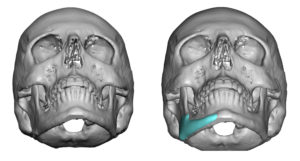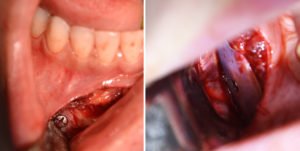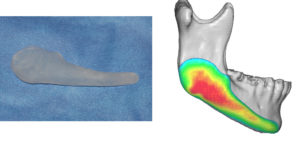Background: Facial asymmetry is common in both young and older people. Most of the time these asymmetries are not large and are usually well tolerated. It is commonly said that most people have facial asymmetries and this is perfectly normal. It is even said that some degree of asymmetry adds character to the face and may even be considered a mark of aesthetic distinction. But not every person views their facial asymmetries so favorably. And the magnitude of the facial asymmetry does not always correlate with the degree of concern about it.
One of the most common asymmetries seen in the face is in the lower jaw. This most presents as hypoplasia or having a smaller side with potential chin deviation to that side. Much more rarely is it due to hyperplasia or over development of one side. More aesthetic lower jaw asymmetries have a normal occlusion, lack of a significant occlusal cant and/or have been orthodontically corrected. One side of the lower face will simply look ‘off’ and unbalanced.
The goal of aesthetic jaw asymmetries is to augment the smaller side for a better match to the other side. While surgeons frequently try to eyeball the amount and location of the jaw augmentation needed, this often just leads to another version of the asymmetry. A 3D approach is best done to determine the exact amount and location of the asymmetry and make an implant that ideally matches the jaw shape of the opposite side.



Case Highlights:
1) Jaw asymmetry is a frequent component of many facial asymmetries.
2) Aesthetic jaw asymmetry (not associated with a malocclusion) due to hypoplasia is best treated by augmenting the smaller side.
3) A custom jawline implant made from a 3D CT scan is the most accurate method to correct jaw asymmetry.
Dr. Barry Eppley
Indianapolis, Indiana



